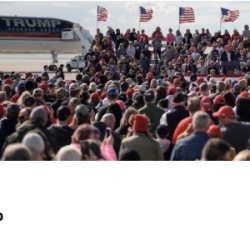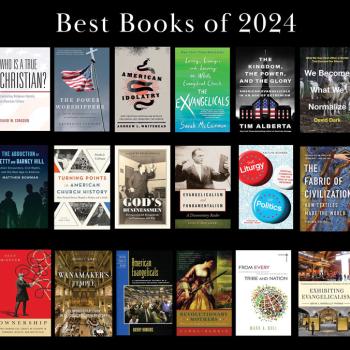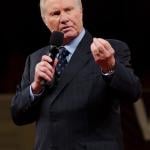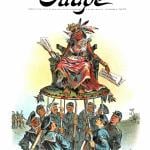This column is adapted from my introductory remarks on “The Risk of Social Media Engagement for Historians”, which I gave for a roundtable discussion at the recent Biennial Professional Conference for the Conference on Faith and History. This panel was sponsored by the Anxious Bench, chaired by our previous editor Chris Gehrz, and it included expert contributions from fellow panelists and colleagues, Andrea Turpin and David Swartz.
I joined Facebook in 2006, Twitter in 2009, and Instagram in 2012. Each served their purposes, but it has been Twitter where deep social connections took place for me; I’ve always been a person interested in texts. This is perhaps why I’ve been disinclined to deactivate my Twitter account following the recent election.
As an associate pastor in Tulsa, Oklahoma, I gravitated to Twitter to find out about current news in my reformed evangelical circles. I followed other pastors, publishing houses, digital ministries, and I churned out content as a blogger. I developed a personal website, blogged daily, and published a daily curation of posts from around the web.
I unintentionally built a “platform” in an effort to get free books from, at the time, preferred publishers like Crossway, Banner of Truth, RHB, P&R, B&H, Zondervan, Baker, and Eerdmans. This led to invitations for guest contributions at 9Marks, CBMW, TGC, Lifeway’s Pastors Today, Christianity.com, Christ and Pop Culture, as well as appearances on other blogger’s websites within my network, such as Tim Challies, Trevin Wax, and Aaron Armstrong.
Twitter became a hub for pushing out that content, but it also became a location to have real-time conversations with others in my reformed social network about distinguished happenings of the time. Annually, we would pilgrimage to national and regional conferences like the Desiring God Pastor’s Conference, TGC, or T4G (Band of Bloggers). These conferences were highlights of my year because I would get to meet other people in my network, in real life, sit in conference sessions, and listen to preaching heroes, get meals, and talk theology, ministry, and personal life. I still think fondly about those meals and conversations.
For me, the reward of social media during this era involved converting digital connections into real life connections and maintaining those friendships over time, despite the barriers distance poses for fellowship. This is my nostalgic memory and experience with social media from 2010–14.
Then I had to make a tough decision. I spent much of 2014 comparing doctoral opportunities. I simultaneously accepted an invitation to study a Ph.D. in Church History with Doug Sweeney at Trinity Evangelical Divinity School, and I joined the pastoral team at Calvary Memorial Church in Oak Park. However, these new commitments meant that I would have to give up something else. I couldn’t continue to maintain a blog and social media presence, pastor, and study a Ph.D. at TEDS. With the help of a loving spouse, I recognized that I had become inordinately dependent upon social media as a source of my identity. The frequent doses of dopamine surges from social engagement had caused me to seek belongingness and worthiness in the wrong place, a sensation common for those who have an inordinate dependence upon technology for social reinforcement, attachment, and sense of meaning.
I decided to shut down my blog, detach from social, and focus on studies. For the next three years, I was virtually absent from social media, and I turned down all guest contribution opportunities. Serendipitously, my course work and independent study reformed my theological and social commitments. While the syllabi I had been given during most of my academic evangelical graduate career read like everything Herbert Butterfield warned against concerning Whiggish history, I had, through my own historical curiosity, introduced myself to a broad field of indigene and women’s histories, as well as social and cultural histories that complimented all the intellectual history I received in the nursery of evangelical education. I had also become thoroughly convinced about historic, systemic injustices in U. S. history, and the need to actively support and give space for the leadership and voices of the most vulnerable, marginalized, and historically oppressed.
As I slowly returned to social media and re-engaged evangelical spaces as a public intellectual and “activist historian”, many people had no idea about my past as a reformed, gospel-centered evangelical and how much I had radically altered. Anecdotally, we could say this. 2012 Joey went toe to toe with Rachel Held Evans on Twitter while 2018 Joey was not just heartbroken about her sudden death but revered her as a protestant saint, after seeing her through Kate Bowler’s eyes in The Preacher’s Wife.
As I re-engaged social media in new ways, I leveraged my intuition and professional skills to speak about history, evangelicals, and current events in different ways than previously. I lent this skillset for service with the Conference on Faith and History (CFH), an organization I had appreciated for years. To my surprise, I was asked to provide fresh leadership to this website, The Anxious Bench, a blog I had been reading since its inception. These opportunities, alongside a knack for teaching and administration, opened doors to teach at Wheaton College. So seemingly some professional reward accompanied efforts of attending to a well curated social media profile.
Nonetheless, I had noticed that a decisive social media turn had taken place leading up to 2016. People had changed how they engaged with social media. Some of this was due to new features on social media and innovative developments in data science. Controversy, hot/bad takes, and dumpster fire content was rewarded as much, if not more, than when evangelicals produced edifying content, which fostered an antipodal reward function in Christians that toppled centuries of practices in Christian virtue ethics. It became a badge of honor for content creators to be blocked by certain online personalities. Quote posting became a method to not just dunk on a person’s content but to redirect the conversation to your own platform and social channel/feed, reinforcing narcissistic proclivities. These became tactics to cultivate an audience and build a platform. And people were being rewarded by others and institutions for this behavior.
Worse yet, passively silent neglect by “civil” and respectable evangelical institutions and individuals of influence led to a permissive culture towards this behavior. Elite establishment evangelicals have yet to figure out how to react to this shift in social media engagement. This has been a significant cause to their loss of cultural and political power in an era that lauds the “spectacle” of social media.
Frankly, circumstances have become such that if you’re skilled at reading the room and committed to cultivate your social content until the algorithm privileges your content over others, you will inevitably craft that perfectly timed post that gets ratioed so much that you reach audiences with your ideas that you never imagined reaching. This can be good or bad.
From 2010 to the present, I have endured delicate conversations with colleagues, inside and outside my various institutional affiliations, related to my tactics and experience in social media engagement. It became all too common to hear comments like: “So I saw that post” or “It looks like you had a big day on Twitter” or “We need to sit down and talk about that post” or “Our leadership watched that post go viral on social.” Undoubtedly, some of these interactions were not intended to be sleights, but they did niggle at my conscience, nonetheless.
Public intellectual engagement on social media is double-edged. Undoubtedly, it has gotten some people hired and others let go from institutions. Guild service or public intellectual work like this creates a burden of invisible labor that is rarely rewarded by institutions. Yet, some institutions see it as an intangible asset while not considering the plausible liability it becomes for the content creator or the institution when things go upside down on them because of bullying or organized mob attacks on the content creator.
There is a reward with public intellectual work but there is also quite a bit of risk. It’s a blessing and a curse, so count the costs, and listen to your body when it tells you that you’re operating with a social and emotional deficit that is leading to burnout. Feel free to take extensive breaks from social media. If you feel its best to deactivate an account or shift to a different platform, listen to that soft nudge in your spirit.













